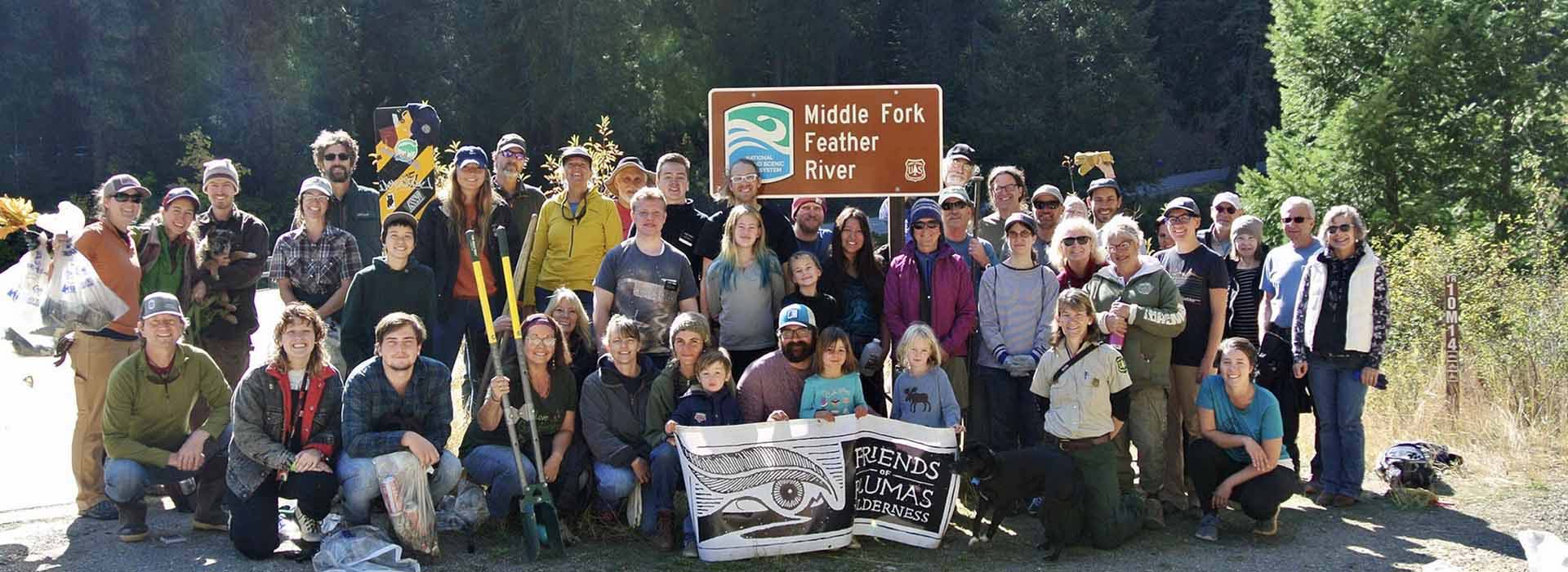
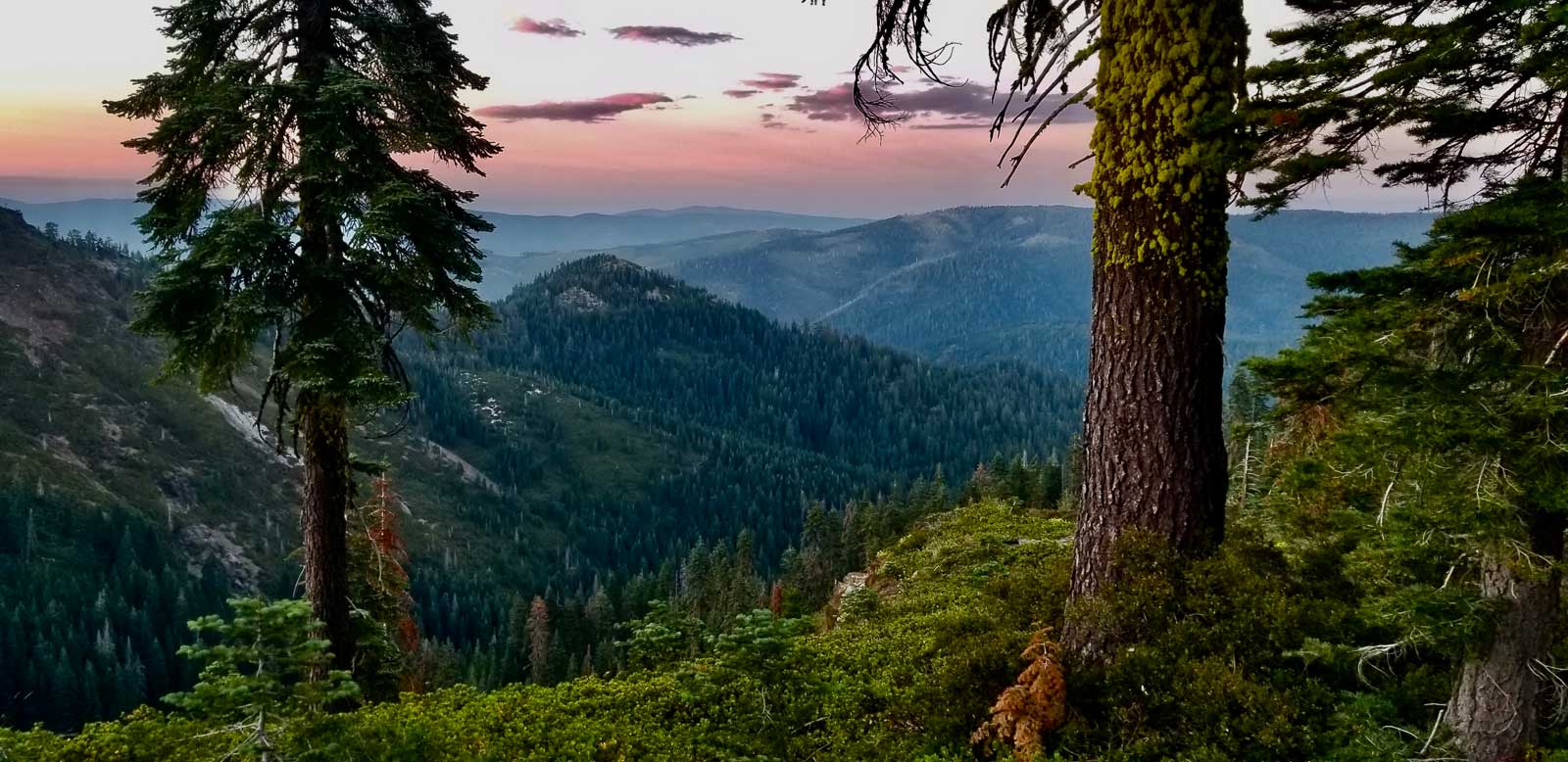

CONNECT WITH US
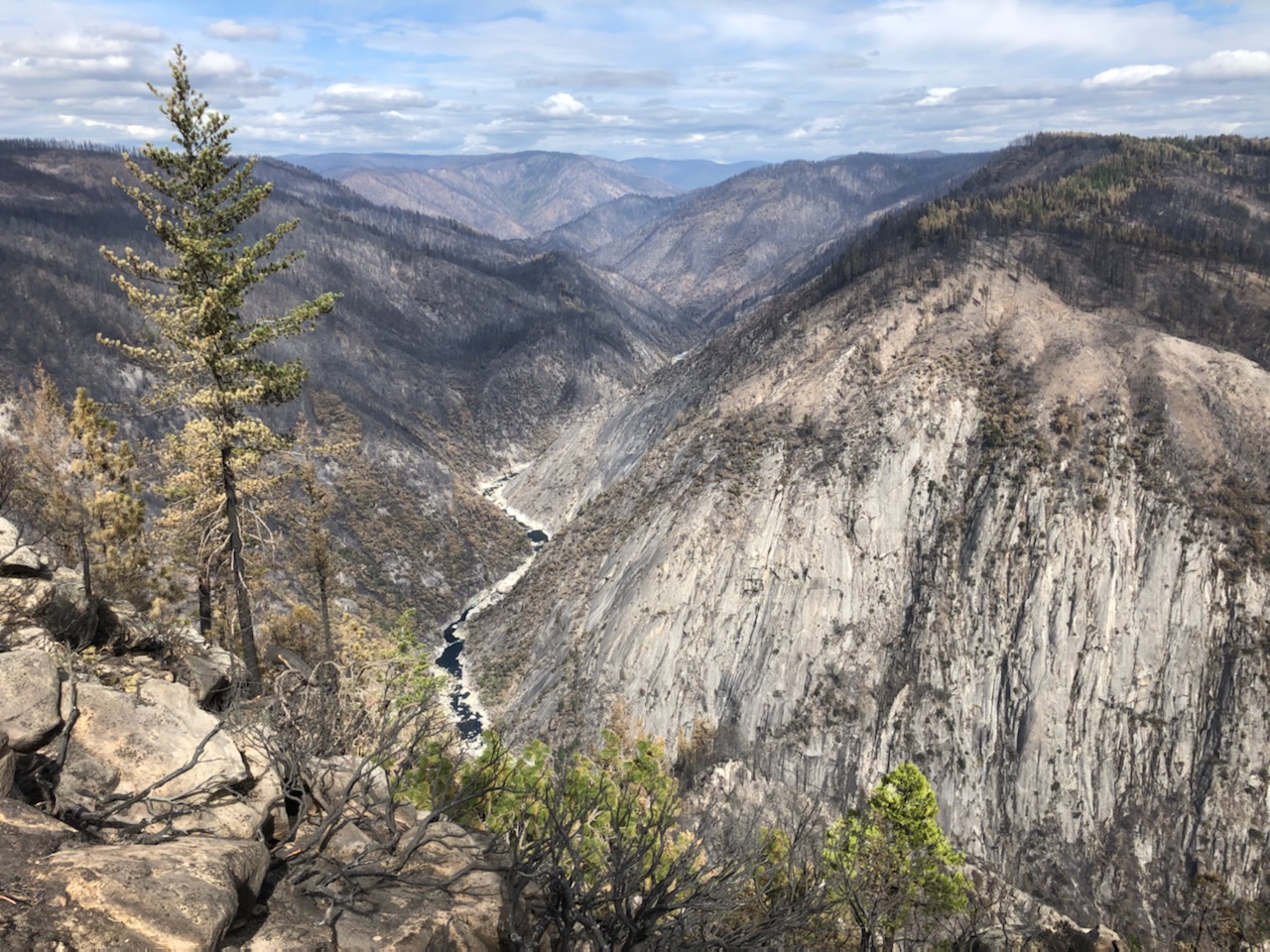
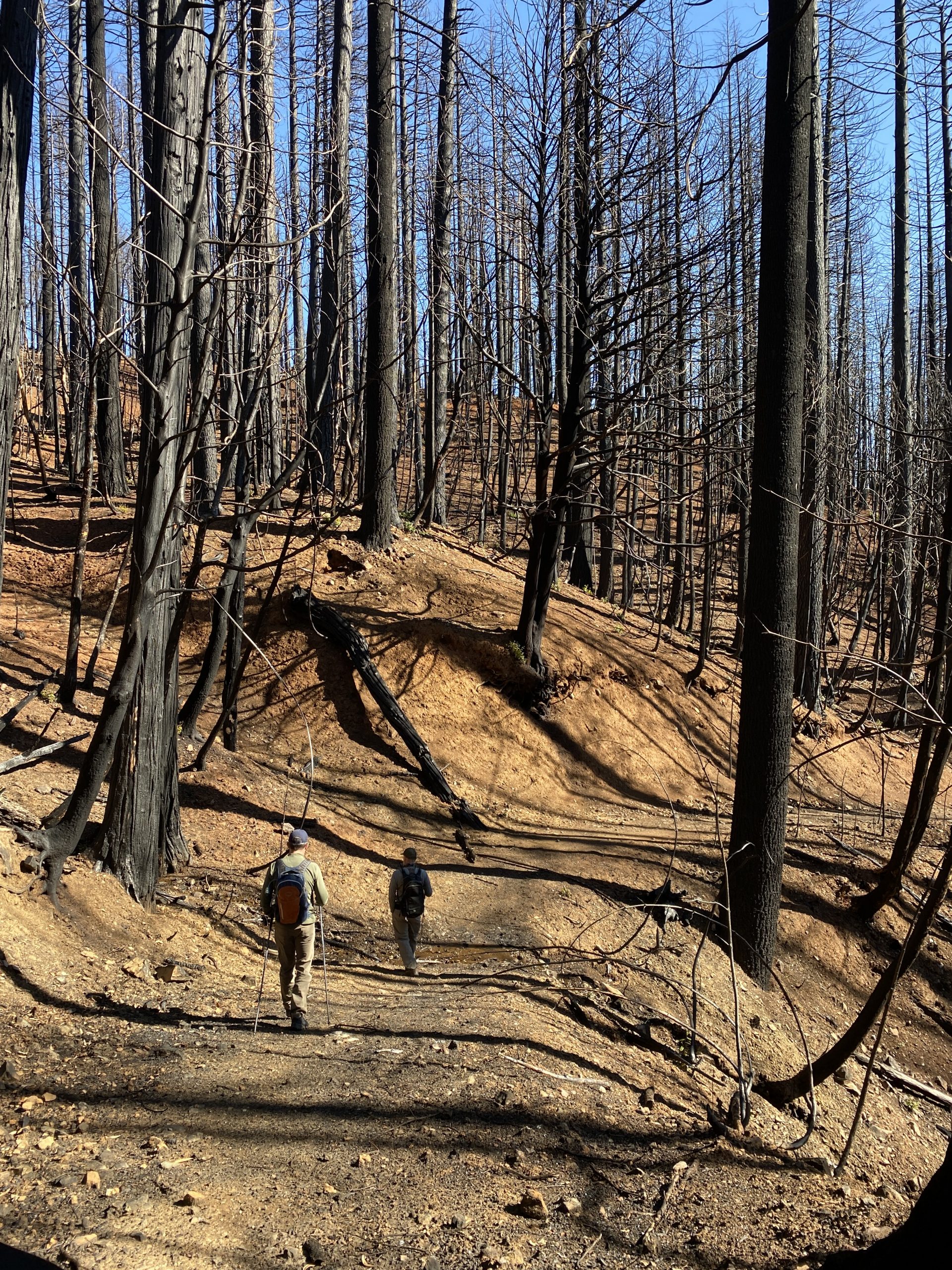
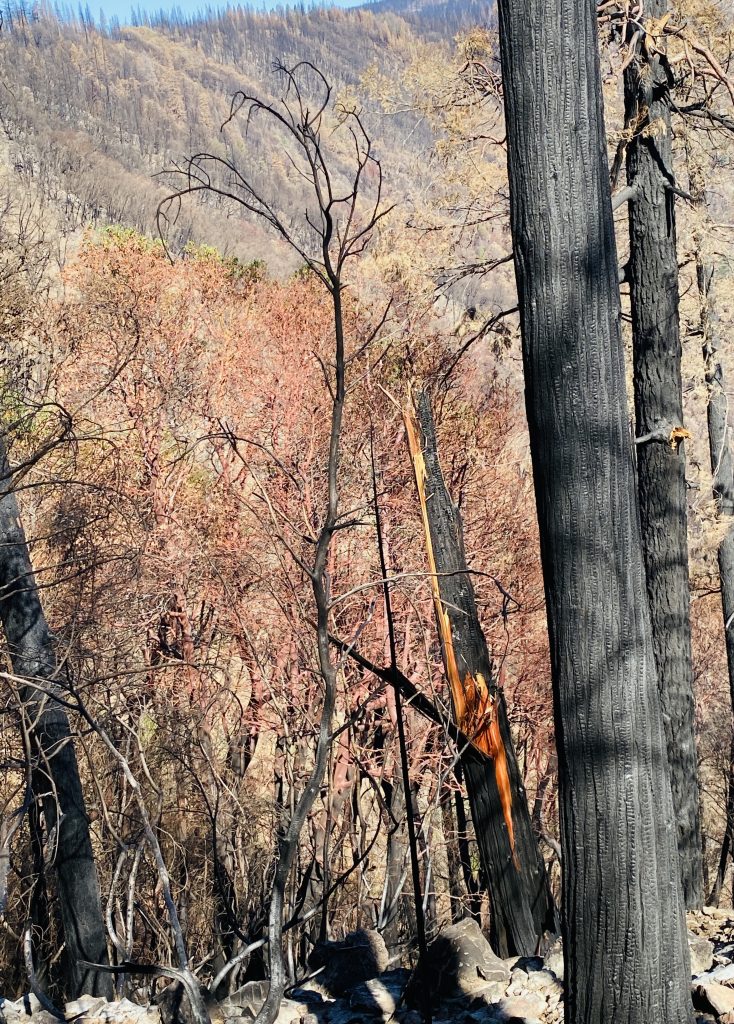
There are those places deep in the interior of our watershed that we look at on the map for so long that they become part of us. They gather mystery that way. We imagine our way into them, sometimes for years, before ever going—if we even get to them at all. The proposed Mountain House Creek Special Interest Area is one such place. A steeply cascading tributary stream of the Little North Fork of the Middle Fork of the Feather River, the watershed is deep, seldom visited, and remote. And now, it is utterly burned, consumed by the North Complex Fire last September.
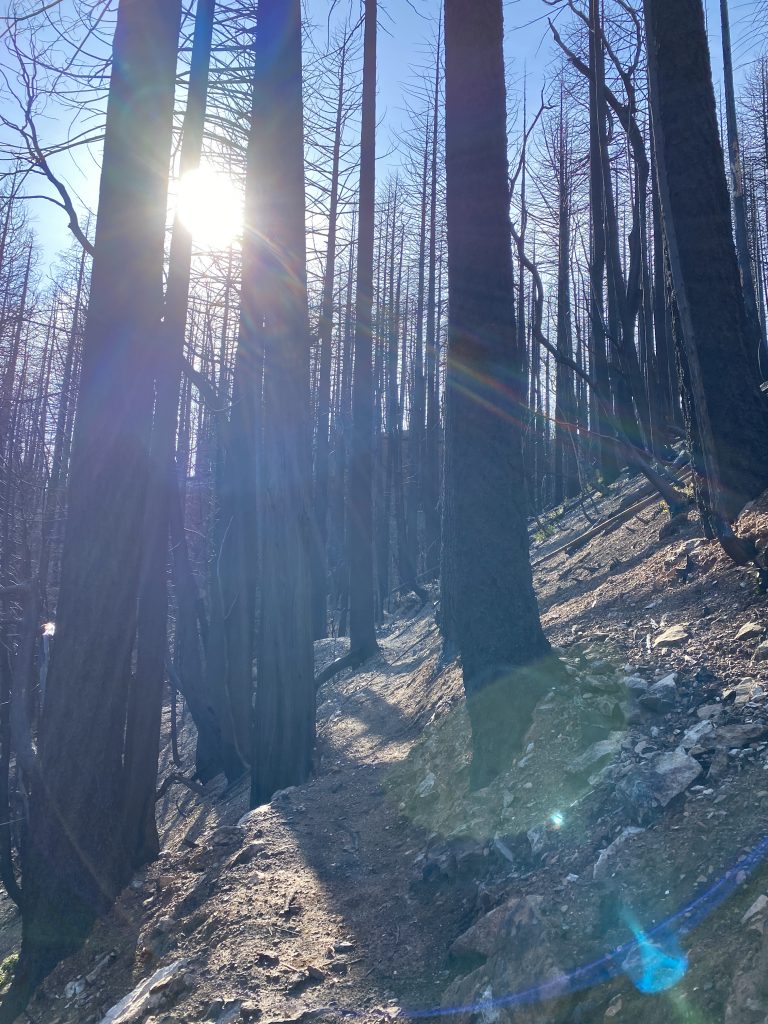
We should remember, though, that this is how Joseph Conrad’s critique of Victorian conquest Heart of Darkness begins, with a rumination on those blank spots, those still-wild spaces, and the desire to explore and in some way possess them. There is something paradoxical about discovery because it is so closely related to conquest and loss, so often predicated on an assumed “savagery” or “primitive” forms of being. We too often romanticize as we seek to tame, as in Conrad’s novel, thereby sidestepping responsibility for the consequences of our presence in wild spaces. In so doing, we overlook the ways that we might imagine, experience, and explore differently in the Twenty-First Century, in which we might suffuse our recreational commitments and economic concerns with ecological protection.
Board members and friends of Friends of Plumas Wilderness visited the proposed Mountain House site three times since the North Complex—in October, February, and June. Each visit revealed something further about the character of the place, about the effects of catastrophic wildfire, and about regeneration, rehabilitation, and change.
October: Gone
Something akin to terror. The shock of gone homes, only chimneys and the carcasses of cars. The body of the burned bear at the trailhead, its ears singed and the fur of its face sucked back into a grin that was all-to-human; all of it so intimate, never meant to be seen. A photo of it should not exist. Fallen trees blocking the road, the soil charred an evil red. That first time it seemed like there would never be any live thing there ever again. The trail was broken. It fell apart utterly at a spot overlooking the whole gruesome scene: a devastated bend of the Little North Fork far below; denuded, blackened trees, also, dead trees with entire canopies still intact, red and orange needles clinging and curled under. Joan texted later that we must go back and honor that bear.
February: Deep Journey
Something akin to trepidation, glad surprise. The roads were cleared and the bear was gone and blackened madrones and oaks and maples had sprouted new growth at their bases. Bracken fern had filled in beneath them. We were in search of the potential champion sugar pines, Doug firs, and madrones that the California Native Plant Society document had mentioned. We found massive trees all burnt. Our aim was to reach the river and perhaps determine the fate of the thousand year old yews that the same document had spoken of. These we never found. The river ran clear and bright and loud, though. It afforded a slender glimmer of hope. A flock of band-tailed pigeons circled eerily at our approach, seemingly lost without green timber. Coming back here was necessary and hard.
June: Glorious Seeps
Something akin to relief. All Spring long, regeneration continued up and down the drainage. By this time, western morning-glory is spreading across whole sections of burnt ground, sometimes winding up the blackened remains of unidentifiable shrubs. Hyacinths bloom among ferns that have reestablished themselves. Scouring rushes spread across a small spring-fed drainage and a lone Washington lily was poised to bloom. A phantom orchid grew from the ash. Birds have come back. The large seep near the trailhead has recovered nicely, a precious source of life.
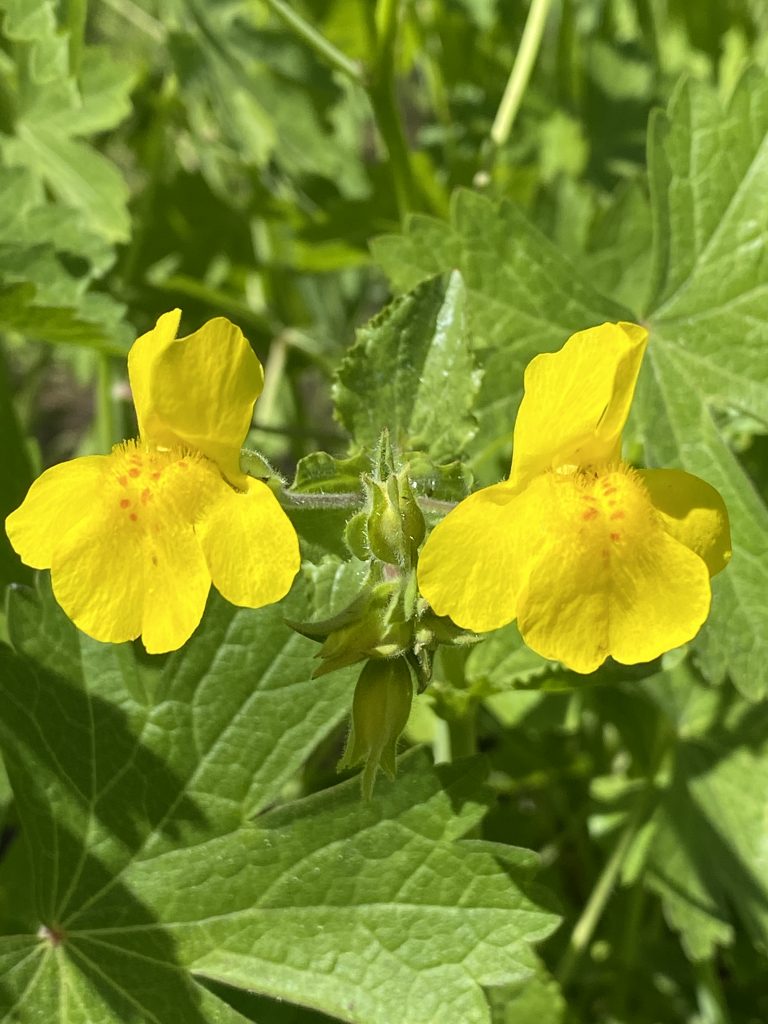
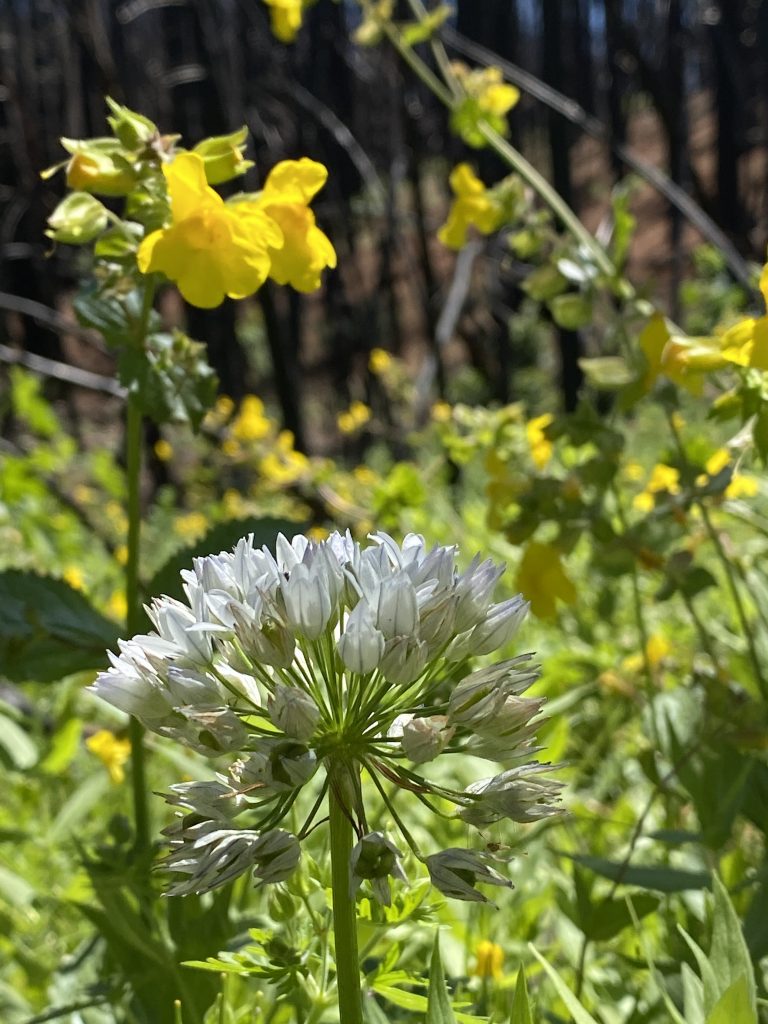
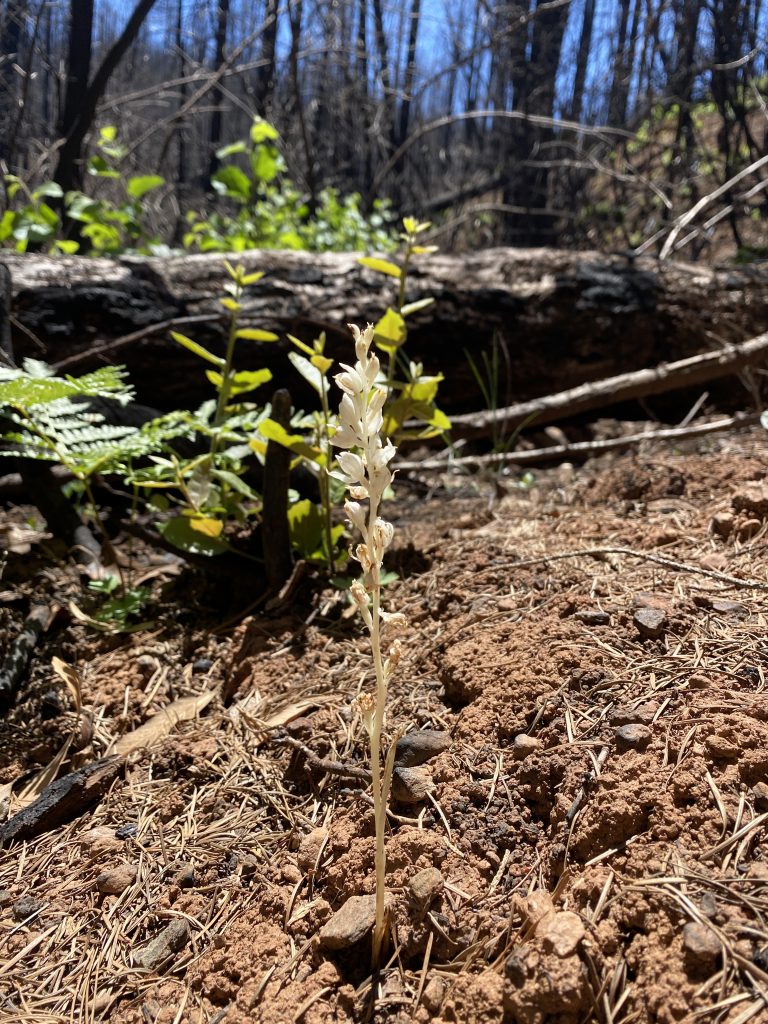
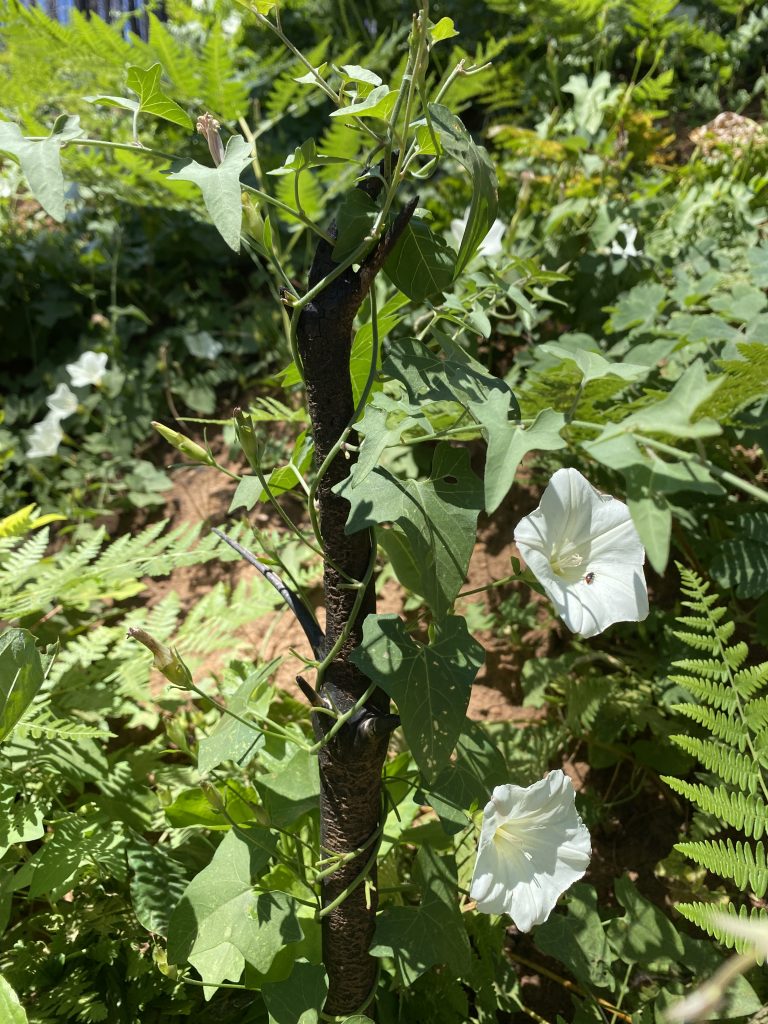
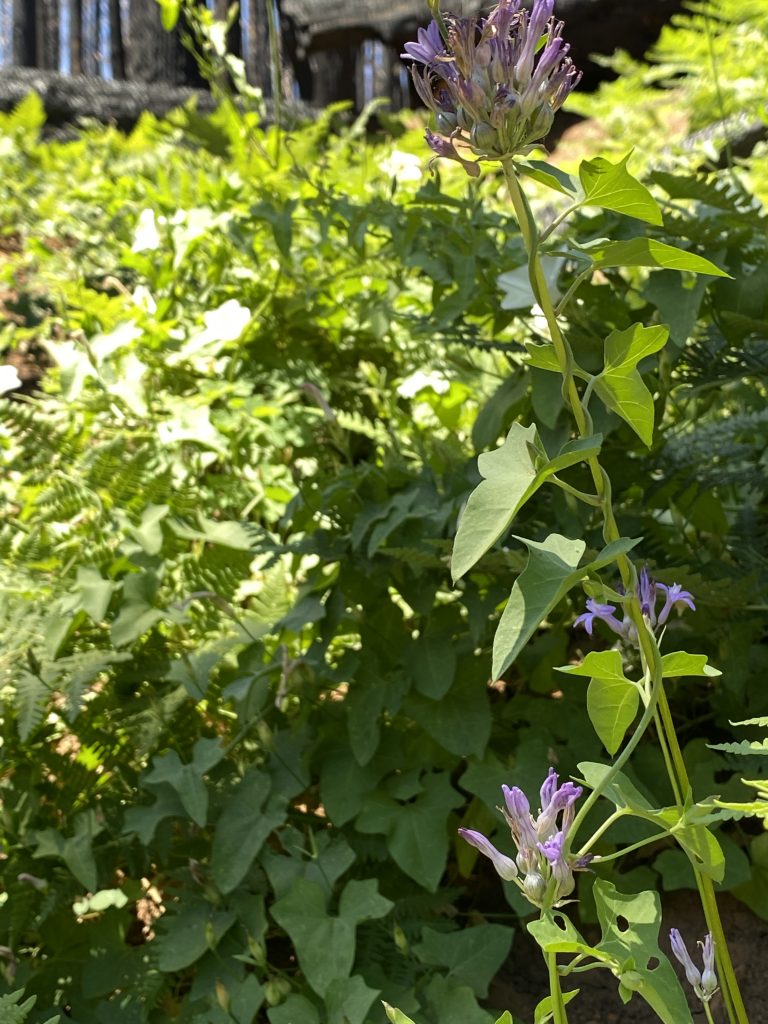
Our fall, winter, and spring visits revealed that life is resourceful and resilient. Nature in the few, far away recesses that remain is wild and unpredictable. This is especially true under a new climatic order that will likely change faster than any history we can conceive. The thousand-year-old yews we never saw will not likely return in a millennium as the climate is changing far too fast for anything to be ancient. If we wish to have big trees in our future we need to follow the lead of the few that remain and slow down.
Friends of Plumas Wilderness believes that we find ourselves when we stop and listen to deep nature. It is true, as John Muir said, “The clearest way to the universe is through a forest wilderness.” When immersed in raw nature we rediscover that we are connected with the trees through the air we breathe and our actions. No matter how far removed we may be from the deepest recesses of the wild, each of us affects them profoundly.
If we lose the forest we are destined to endure a heart of darkness. Upon reflection, FoPW believes that the establishment of a Mountain House SIA would provide an opportunity to explore new restoration practices, institute necessary protections, and create a space to study forest resilience in the context of rare plants and old growth trees. The point is in returning, in tending, not merely discovering.